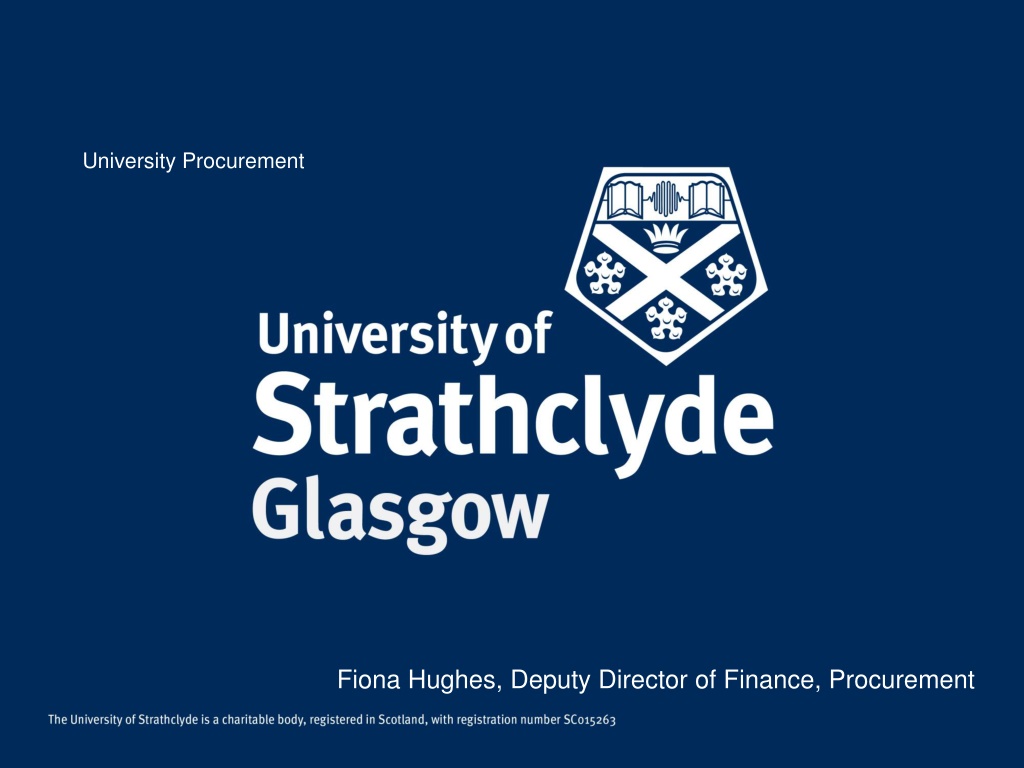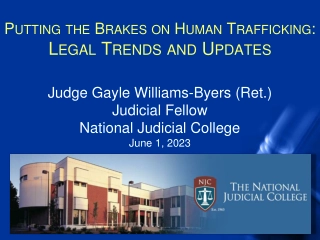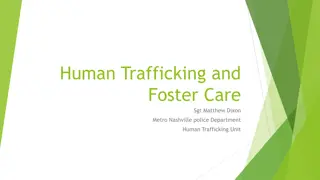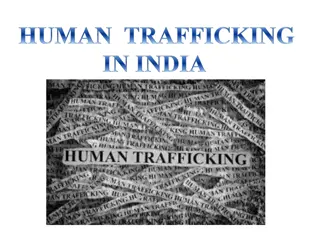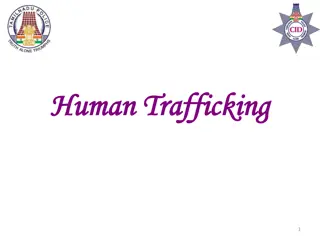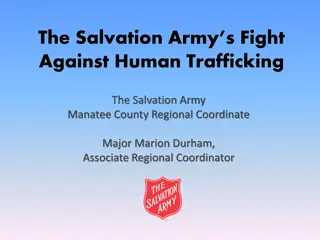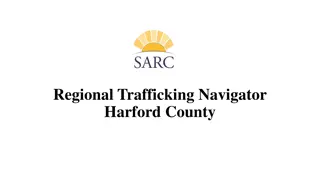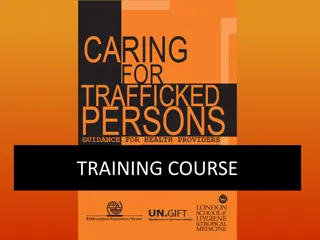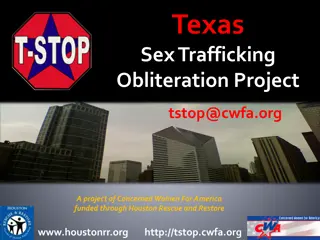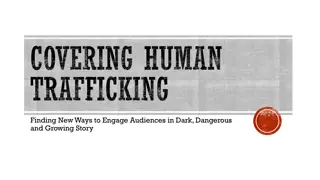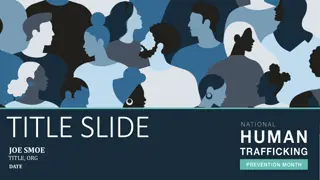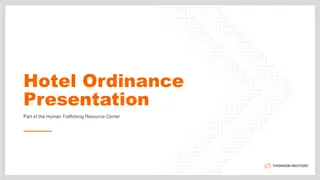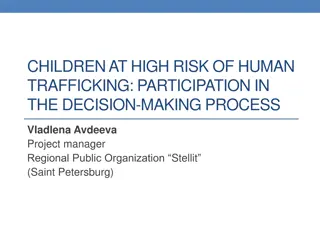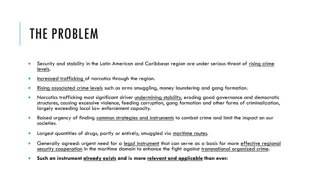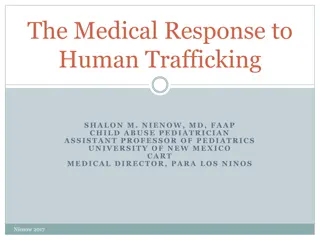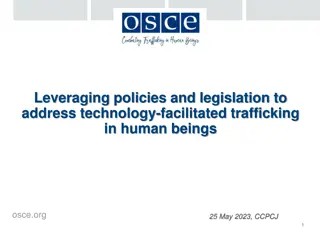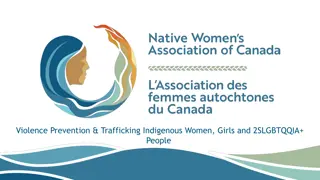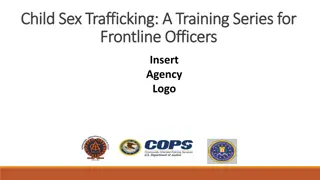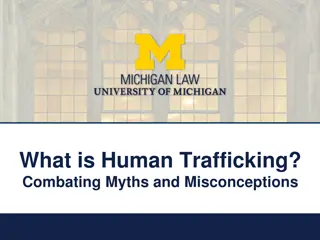Combating Human Trafficking in Higher Education
Human trafficking poses a significant risk within university supply chains, with students vulnerable to exploitation and trafficking for profit. This guide covers the introduction to human trafficking, types of exploitation, indicators, and where to report suspicions. It emphasizes the importance of recognizing and addressing human trafficking in the educational environment to protect students and combat this heinous crime.
Download Presentation

Please find below an Image/Link to download the presentation.
The content on the website is provided AS IS for your information and personal use only. It may not be sold, licensed, or shared on other websites without obtaining consent from the author. Download presentation by click this link. If you encounter any issues during the download, it is possible that the publisher has removed the file from their server.
E N D
Presentation Transcript
University Procurement Fiona Hughes, Deputy Director of Finance, Procurement
How Does Human Trafficking Affect Higher Education? HT is a risk in all of our supply chains! Contracts and contract management must mitigate the risk of this where possible. However, it is closer to home than we think! Students are at risk of trafficking and exploitation right here and right now. In 2022 there have been over 580 potential victims of trafficking were notified to Police Scotland, 184 of who fell into the age 17-24 years age group. With the promise of a UK Education, students from countries with limited opportunities for them are lured here. Often incurring debt to study, in figures between 35k- 100k. Victims have no choice about how to pay the money back and often find themselves trapped in destructive cycles unable to study or attend university. The potential exploiter uses the threat of outing the student as an immigration offender, in the UK in contravention of their VISA as a threat or hold over them. UK nationals can also be victims of trafficking in the UK and throughout the world, most commonly in drugs production and supply and prostitution or other sexual exploitation. Indicators something is wrong are, disengagement from a course, going missing from studies for periods of time, isolation from staff and other students, unexplained pregnancies and injuries.
What will this guide cover Introduction to Human Trafficking (HT) What is considered as HT The Act Why do individuals get involved with Traffickers? Types of Exploitation Labour Exploitation Service and Benefits Exploitation Indicators of HT Initial Response Guide Where to report any suspicions
Introduction to Human Trafficking Human Trafficking is the trade and exploitation of human beings for profit. It is happening in Scotland here and now. The National Referral Mechanism ( NRM ) is a framework for identifying and referring potential victims of modern slavery and ensuring they receive the appropriate support. Over 400 NRMs were received by Police Scotland for investigation in 2020. Watch this short video which uses experiences with real human traffickers to illustrate the methods they use and the lengths they will go to exploit workers for profit. Though the voice used is that of an actor, the content is drawn from very real examples of cases encountered by officers.
Human Trafficking Essential Elements It is an offence to; Recruit Transport or transfer Harbour or receive Exchange or transfer control over another person Arrange or facilitate any of the above With the expectation or knowledge that the person will be or is likely to be exploited; It is irrelevant whether or not a person has consented to any part Threats, force or coercion is not always required. Often involves children and/or vulnerable adults, A child is a person under 18 years - A child CANNOT consent to being exploited Can include Sexual Exploitation
Human Trafficking and Exploitation (Scotland) Act 2015 This legislation came into force 31/05/2016 It covers 2 main offences- - Trafficking for exploitation - Slavery, servitude and forced or compulsory labour The University publishes a Modern Slavery Statement Annually in response to the Act and this can be accessed in the Quick Links of the University homepage.
Why get involved with traffickers? (Push & Pull Factors) Why and how do individuals get involved with traffickers? Often they are misled and/or in a vulnerable situation. The main reasons are outlined below: Escaping Poverty War / Disaster / Abuse Lure of easy money Families want their children to have better life Family/Friends already in UK Established trafficking groups funding, illegal documents, experience Debt Bondage for travel to UK
Types of Exploitation Modern slavery exists in many forms in the UK and across the World, including trafficking into criminal activities like cannabis farming, sexual exploitation, domestic slavery and organ removal and sales. Labour Exploitation For example - forced labour on farms, in construction, shops, bars, nail bars, car washes or manufacturing. Services and Benefits Exploitation
Labour Exploitation The University of Strathclyde s Modern Slavery statement highlights some of the ways the University Procurement and other departments try to manage and mitigate these risks in our contracts.
Services and Benefits Exploitation Securing services and benefits includes forcing someone to commit a criminal act such as using someone for fraud, to launder money, in a cannabis cultivation, to deal drugs or forcing them to shoplift. An example is where an individual is debt bonded.
Indicators of Trafficking Be aware of cultural differences- this does not mean that there are not HT indicators in the background. Control over children and family members exerted by others. Fear expressed by individuals either for a person, authority or in going back to their circumstances. Difficulty in describing family relationships Cultural terms such as uncle, auntie, brother, sister may not relate to familial ties. If something doesn t feel right ......trust your instincts and ask for guidance or help. Watch this video on the top 5 signs of exploitation to look out for.
Initial Response Guide First contact must be victim focussed what are their needs/requirements. Medical assistance takes primacy. Contact the Police- pass on details of what you suspect, what you know and if there are any other possible victims. Consider if the Victim is safe Consider an official Interpreter- don t let others interpret for the victim. Please consider early reporting of concerns. This can be done using 101, 999 to contact the police Modern Slavery helpline 08000 121 700 Unseen App can be downloaded and provides a guide and confidential helpline. Crimestoppers 0800 555 111
Initial Response Video Watch the following video on what not to do and what the correct course of action would be in reporting your suspicions: Do the Right Thing Further links for information: https://www.gla.gov.uk/publications/resources/glaa-videos https://www.scotlandagainstmodernslavery.co.uk/ http://www.antislaverycommissioner.co.uk/media/1061/transparency _in_supply_chains_etc__a_practical_guide__final_.pdf
Contacts scdnationalhumantraffickingunit@scotland.pnn.poli ce.uk National Human Trafficking Unit Telephone: 01236 818479
